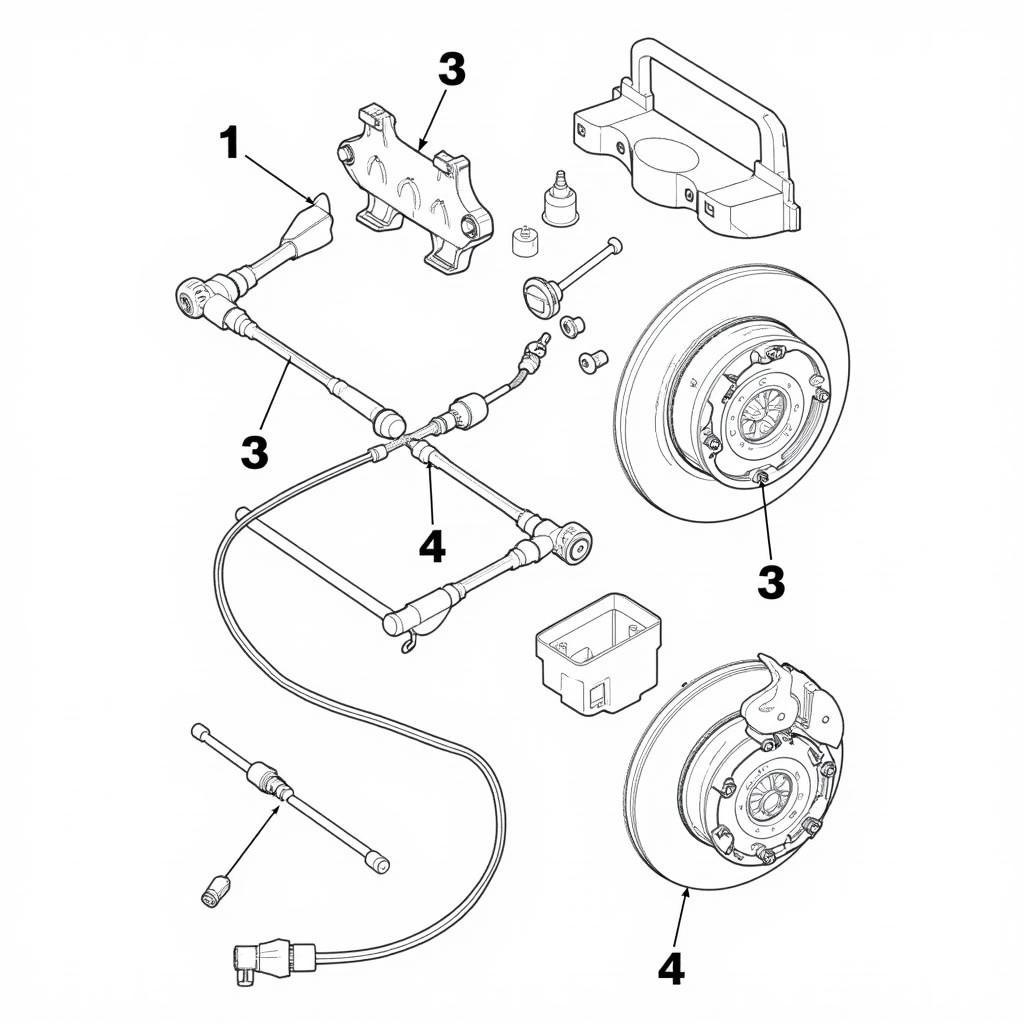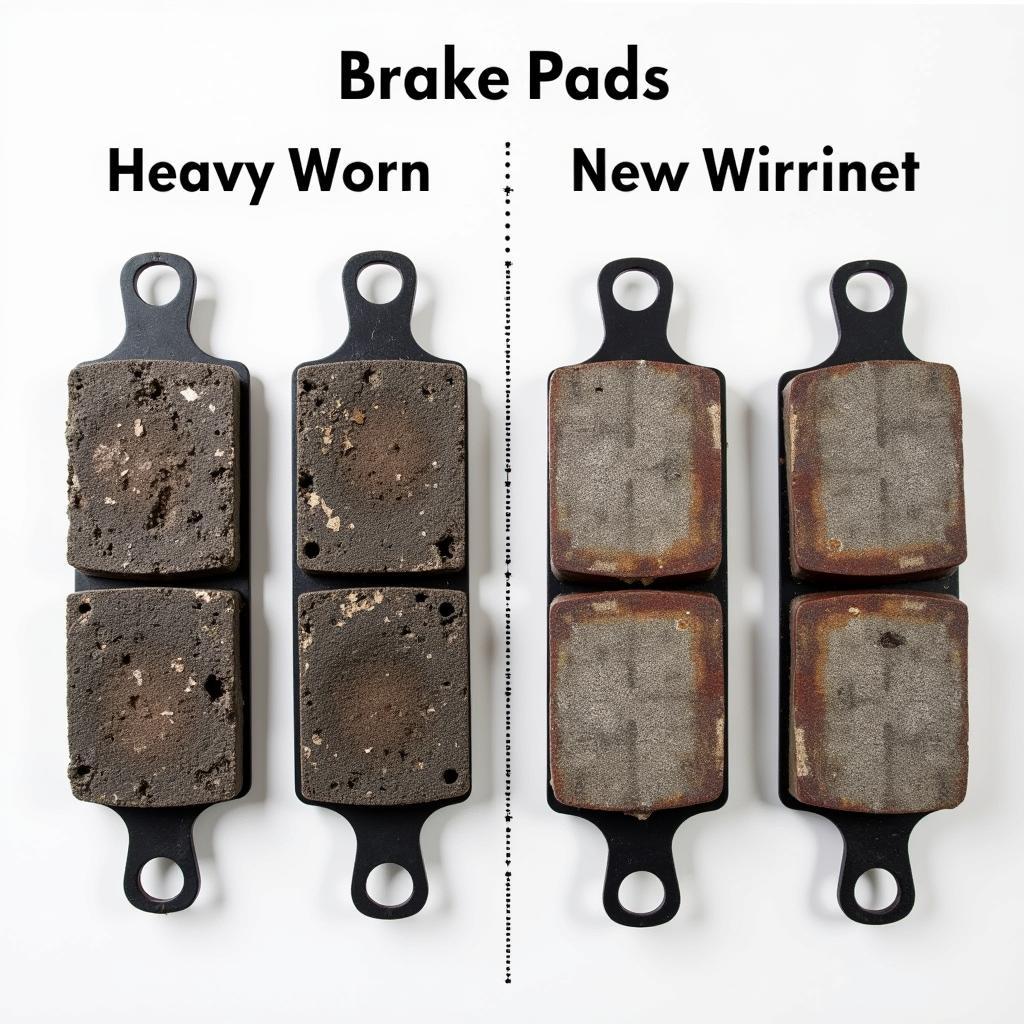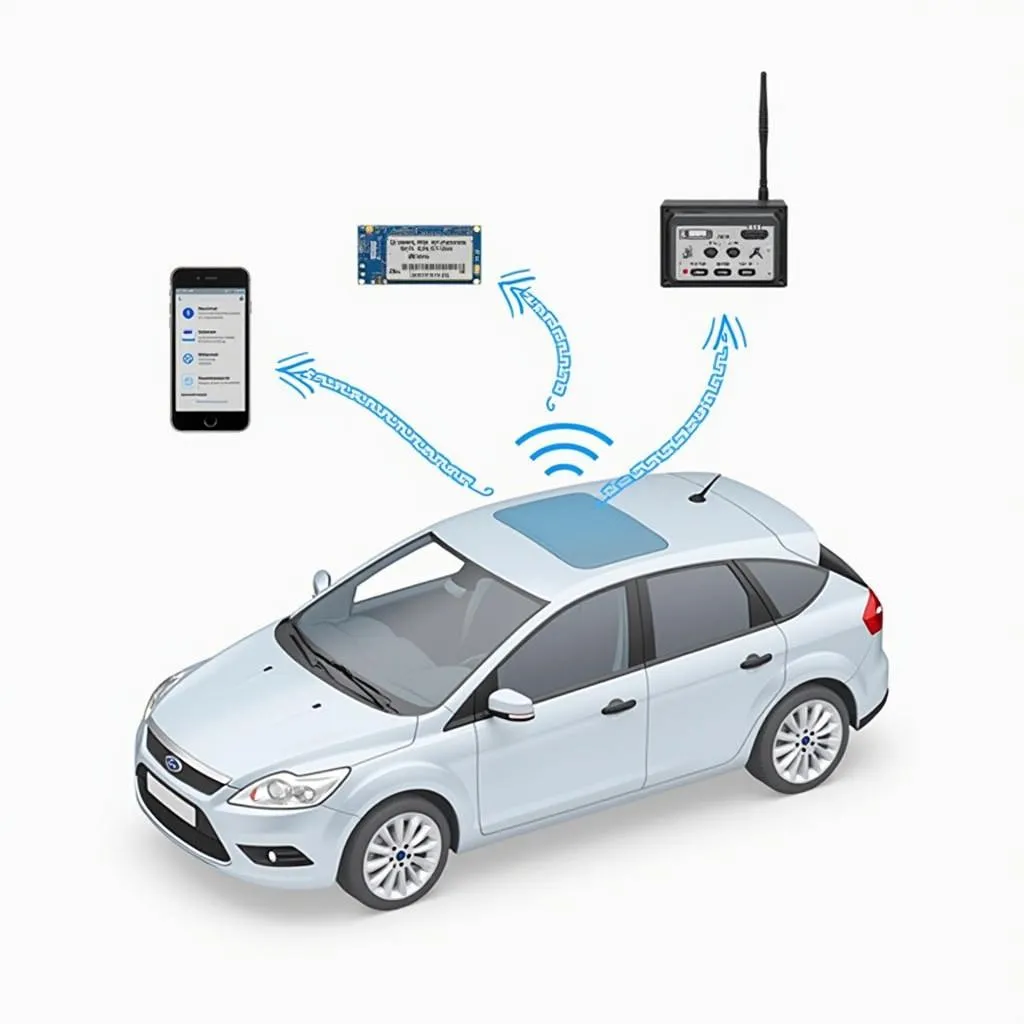The dreaded brake warning light on your Mazda dashboard can be a heart-stopper, leaving you with a pit in your stomach. Is it a minor hiccup or a sign of major brake failure? This comprehensive guide will delve into the common causes of a Mazda brake warning light and provide potential solutions to get you back on the road safely.
Understanding Your Mazda Brake System
Before we jump into the causes, it’s crucial to understand the basic components of your Mazda’s braking system.
- Hydraulic System: This system uses brake fluid to transmit force from the brake pedal to the wheels, effectively slowing down or stopping your vehicle.
- Brake Pads and Rotors: Brake pads press against the brake rotors, generating friction that converts kinetic energy into heat, thus slowing the wheels.
- Brake Calipers: These hydraulic components house the brake pads and exert pressure on them when you press the brake pedal.
- Electronic Brake-force Distribution (EBD): This system optimizes braking force to each wheel, preventing wheel lockup and enhancing stability.
- Anti-lock Braking System (ABS): The ABS system prevents wheels from locking up during hard braking, allowing you to maintain steering control.
 Mazda Brake System Components
Mazda Brake System Components
Common Causes of a Mazda Brake Warning Light
A glowing brake warning light doesn’t always signify a catastrophic failure. Several factors can trigger this warning signal:
1. Low Brake Fluid Level
Why it matters: Brake fluid is the lifeblood of your braking system. A low fluid level often indicates a leak in the system, compromising braking performance.
Possible causes:
- Worn brake hoses or lines
- Leaking brake caliper seals
- Damaged master cylinder
What to do: Check your brake fluid level. If it’s low, do not drive your car. Contact a certified mechanic or dealership immediately to diagnose and repair the leak.
2. Worn Brake Pads
Why it matters: Brake pads wear down over time due to friction. Extremely worn pads can damage rotors, leading to expensive repairs.
Possible causes:
- Normal wear and tear
- Aggressive driving habits
- Frequent braking
What to do: If you suspect your brake pads are worn, have them inspected by a qualified technician. They can assess the remaining pad thickness and advise on replacement if needed.
 Worn Brake Pads vs. New Brake Pads
Worn Brake Pads vs. New Brake Pads
3. Faulty Brake Light Switch
Why it matters: The brake light switch activates your brake lights when you press the pedal. A malfunctioning switch can prevent the lights from illuminating, posing a safety hazard.
Possible causes:
- Worn or damaged switch contacts
- Misaligned switch
- Electrical issues
What to do: If your brake lights aren’t working along with the warning light, the switch could be the culprit. A qualified technician can diagnose and replace the faulty switch.
4. ABS System Malfunction
Why it matters: Your ABS system ensures optimal braking performance and prevents wheel lockup. A malfunction can compromise your vehicle’s stability during hard braking.
Possible causes:
- Faulty ABS sensor
- Damaged ABS control module
- Wiring issues
What to do: An ABS malfunction often triggers a separate warning light. However, if the brake warning light persists, have your ABS system inspected by a professional for diagnosis and repair.
5. Parking Brake Engaged
Why it matters: This might seem obvious, but it’s easy to overlook. Driving with the parking brake engaged can cause significant damage to your braking system.
What to do: Ensure the parking brake is fully disengaged. If the light remains illuminated, there might be an issue with the parking brake sensor or mechanism.
Remote Diagnostics and Software Solutions
Modern vehicles, including Mazda models, are equipped with sophisticated electronic systems. In some cases, the brake warning light might be triggered by software glitches or sensor errors. Here’s where remote diagnostics and software solutions come into play.
- Remote Diagnostics: Specialized software can connect to your Mazda’s onboard computer system remotely to retrieve diagnostic trouble codes (DTCs). These codes provide valuable insights into the underlying cause of the warning light.
- Software Updates: Like any software, your Mazda’s vehicle control modules (VCMs) might require updates to address bugs, improve performance, and optimize various systems, including the braking system.
For example, if you’re experiencing a Mazda CX 5 brake pad warning light, remote diagnostics can help pinpoint the exact issue, while software updates can ensure optimal brake system performance.
Expert Insights
“Ignoring a brake warning light can be detrimental to your safety and lead to costly repairs down the line. Regular brake inspections and timely maintenance are crucial for preventing major brake problems,” advises John Miller, a certified automotive technician with over 20 years of experience. “Modern technology allows us to diagnose and address brake issues more efficiently than ever before, with remote diagnostics and software solutions playing an increasingly vital role.”
Conclusion
A Mazda brake warning light shouldn’t be ignored. While it could be a minor issue like worn brake pads, it could also indicate a more serious problem requiring immediate attention. If your brake warning light comes on, it’s crucial to assess the situation, check the basics like brake fluid level and parking brake engagement, and if needed, consult a qualified technician for professional diagnosis and repair. With prompt action, you can ensure your Mazda’s braking system functions flawlessly, keeping you safe on the road.
Frequently Asked Questions
1. Can I drive my Mazda with the brake warning light on?
It’s not recommended. Driving with a brake warning light illuminated can be dangerous.
2. How often should I get my brake pads replaced?
Brake pad lifespan varies, but it’s generally recommended to have them inspected every 15,000 miles or as part of your regular maintenance schedule.
3. Why is my brake warning light flashing?
A flashing brake warning light usually indicates a more serious issue, such as a problem with the ABS system or a significant drop in brake fluid level.
4. How much does it cost to fix a Mazda brake warning light issue?
Repair costs depend on the underlying cause. Simple fixes like replacing brake pads are less expensive than complex repairs involving ABS components or hydraulic system leaks.
5. Can a low battery cause the brake warning light to come on?
While uncommon, a severely low battery can sometimes disrupt the vehicle’s electrical system, potentially triggering various warning lights, including the brake warning light.

